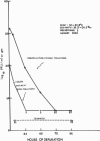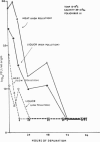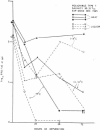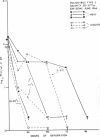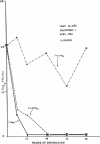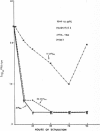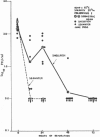Abstract
A study was conducted to evaluate critically the feasibility of using the self-cleansing mechanism as a practical means to obtain virus-free shellfish. Two systems supplied with fresh running seawater, three strains of human enterovirus and the Northern quahaug, were used as working models. Preliminary experiments in the experimental system under arbitrarily selected conditions showed that depuration of poliovirus-polluted quahaugs could be achieved by the method used for the Eastern oyster. The factors affecting viral depuration studied so far included: (i) initial concentration of shellfish pollution; (ii) temperature of seawater; and (iii) salinity of seawater. It was shown that purification of the lightly polluted shellfish was achieved sooner than of the heavily polluted ones. The efficiency of viral depuration was roughly a function of the water temperature within the range tested (5 to 20 C). Reduction of salinity to 50 to 60% of the original level stopped this process completely, but 25% reduction in salinity did not affect significantly the rate of depuration. Preliminary study in the pilot system showed that viral depuration in the large tank appeared to be equally as efficient as that in the small experimental tanks under the particular conditions.
Full text
PDF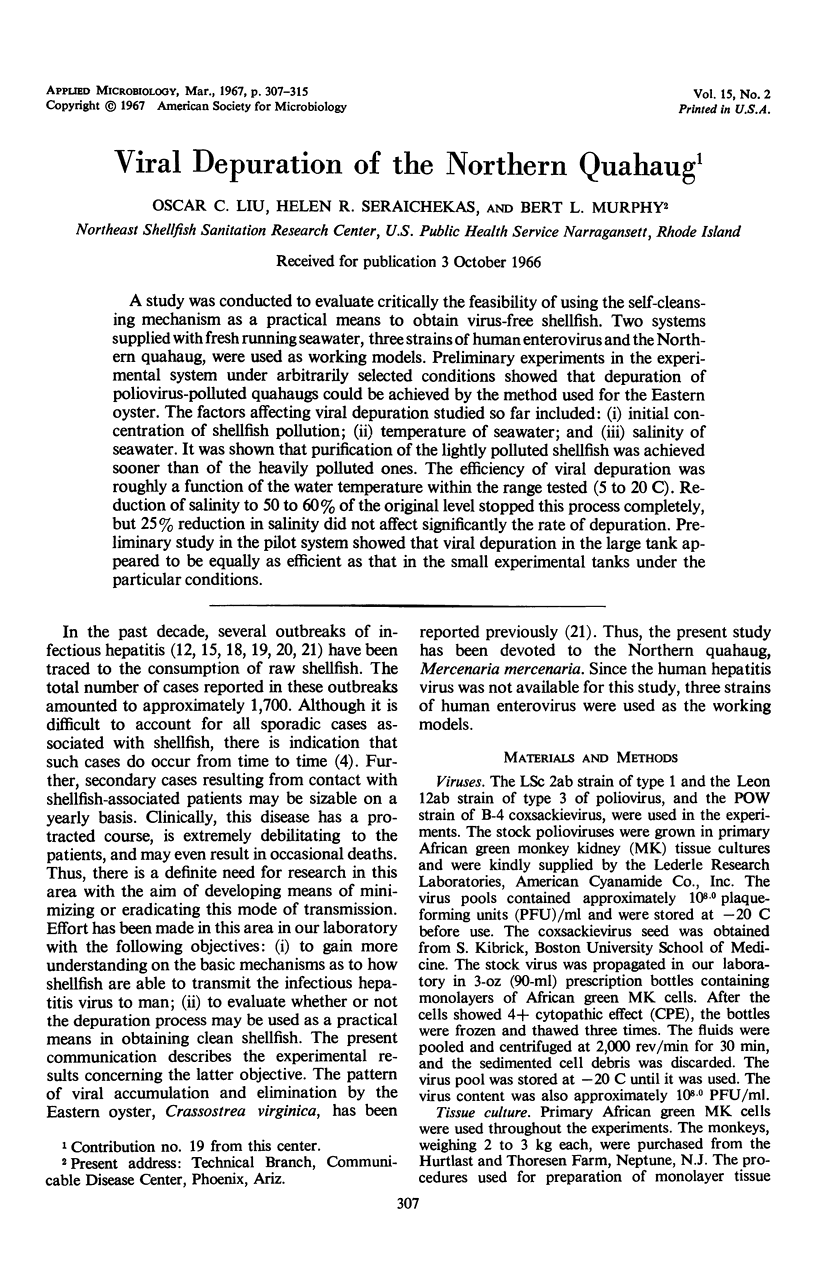
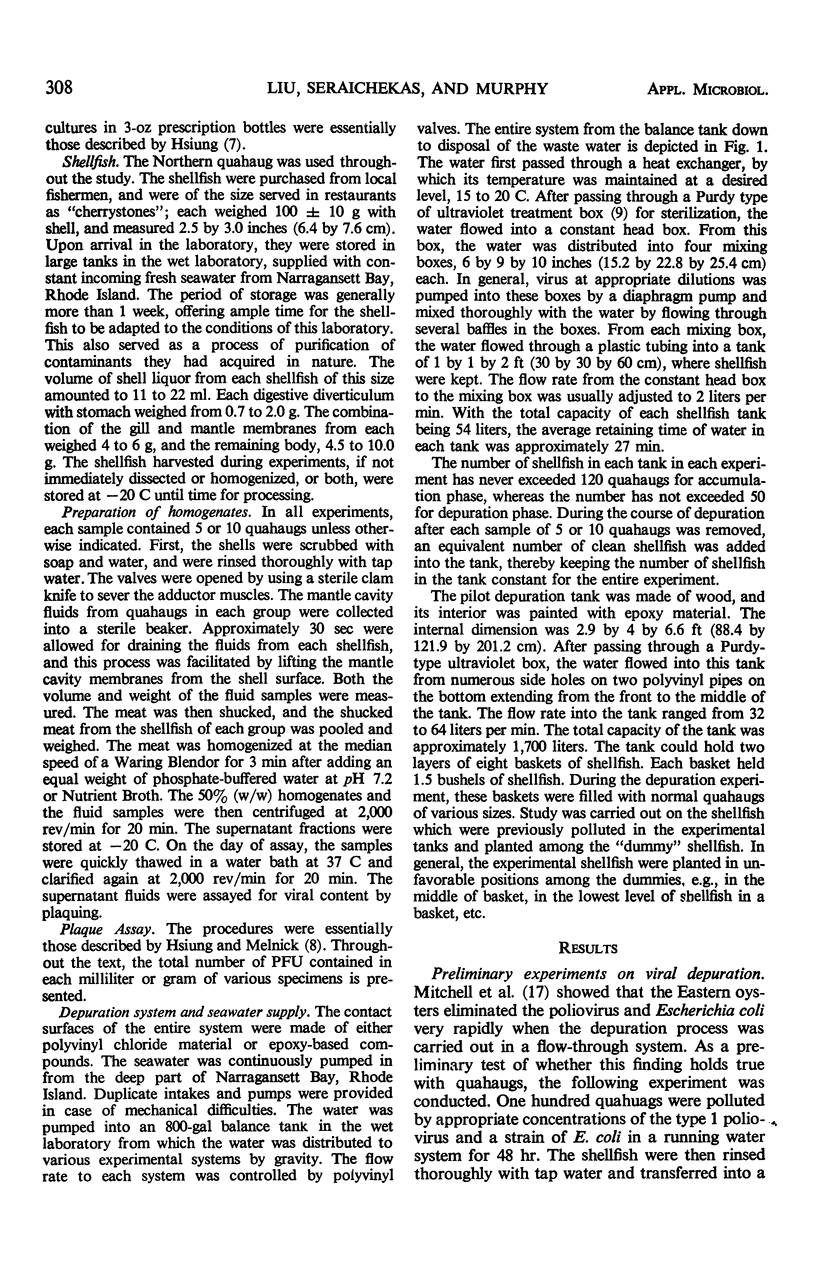
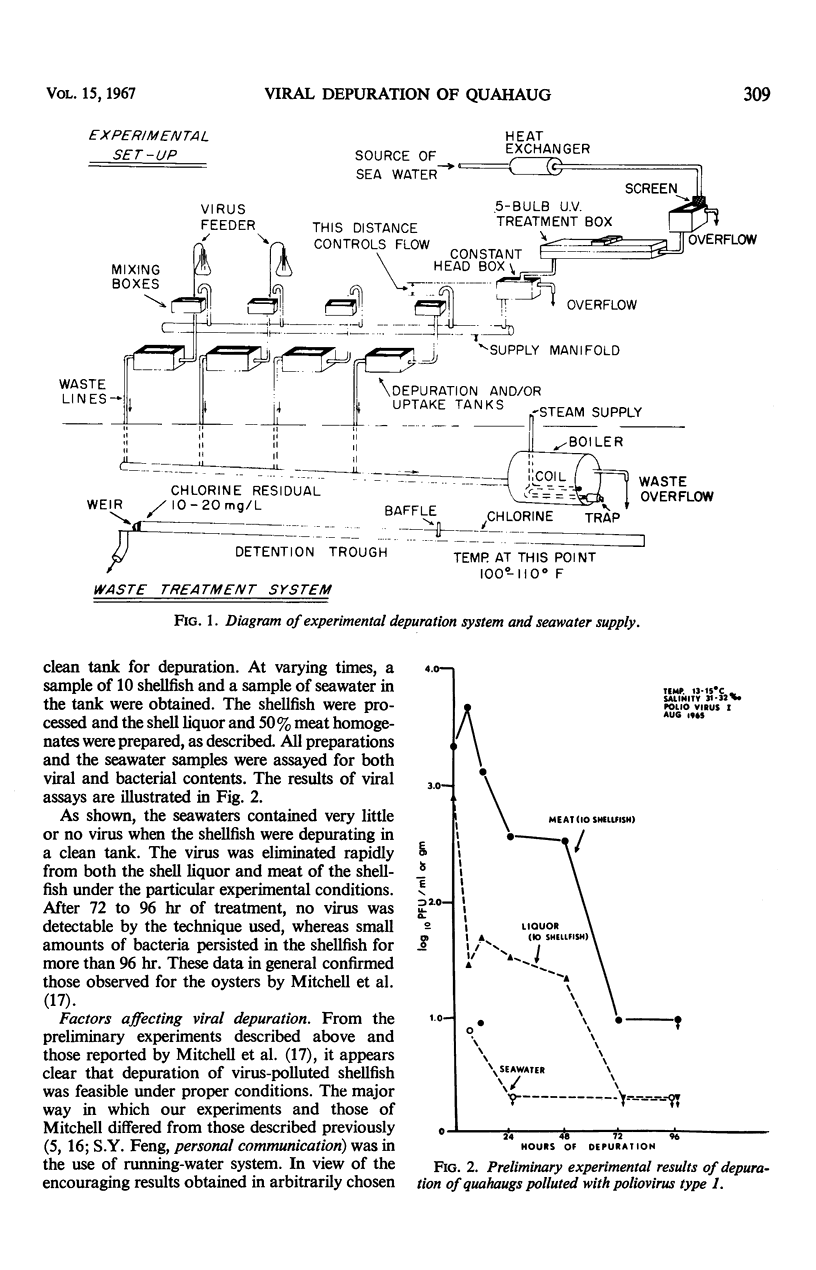
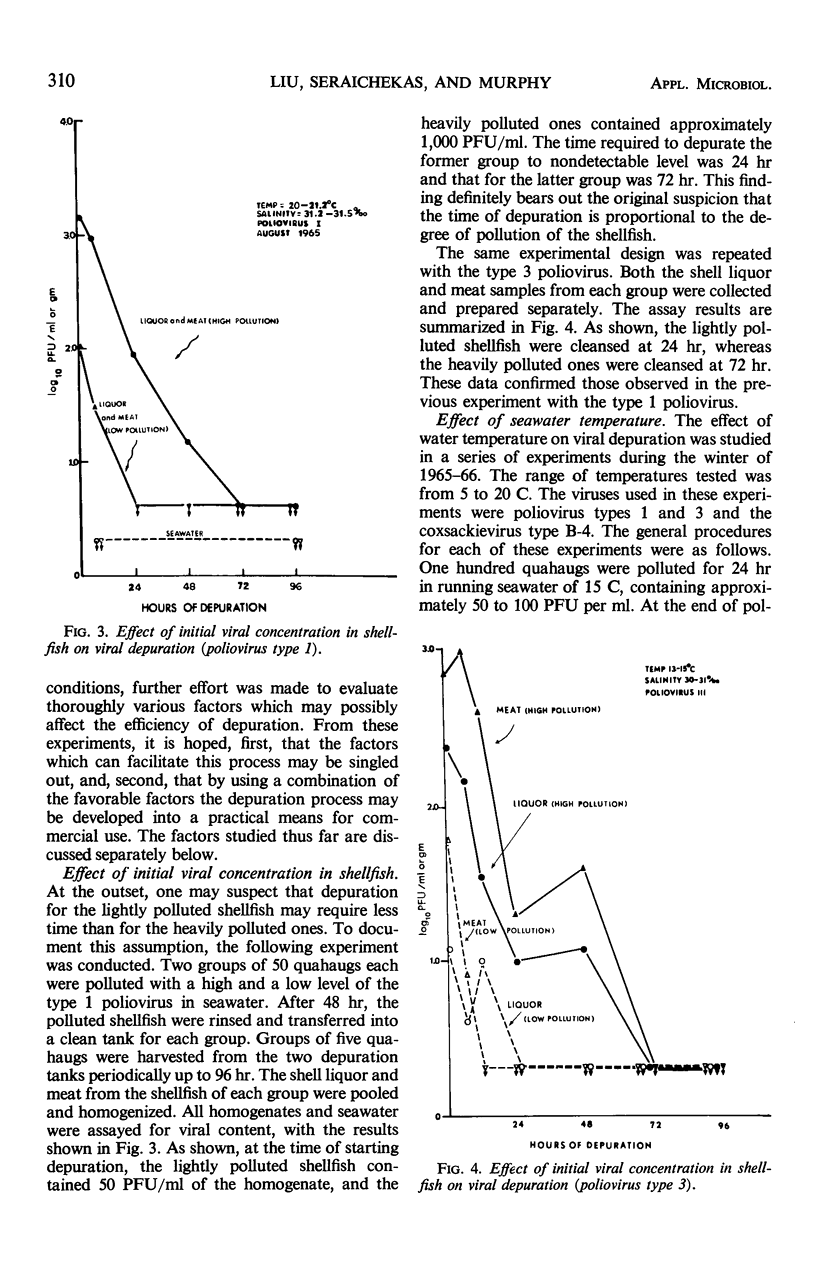
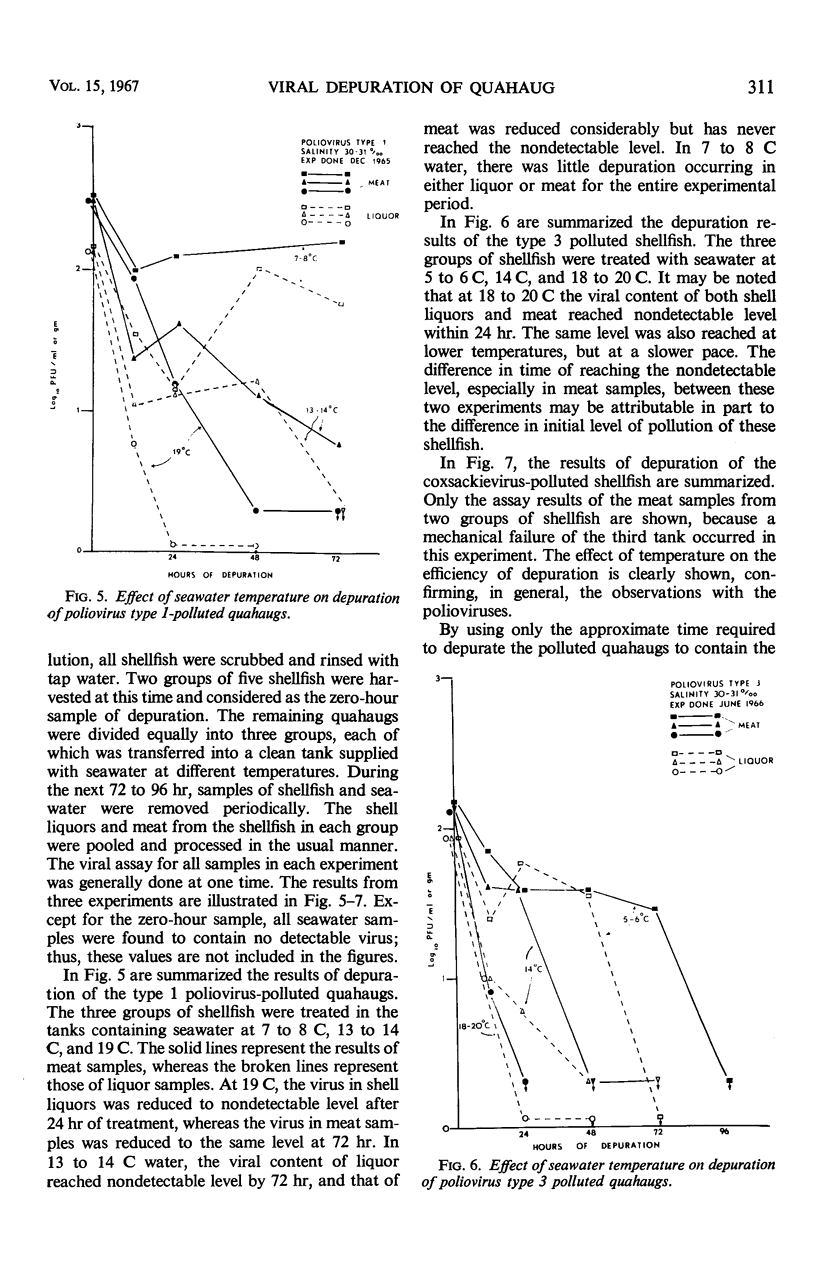
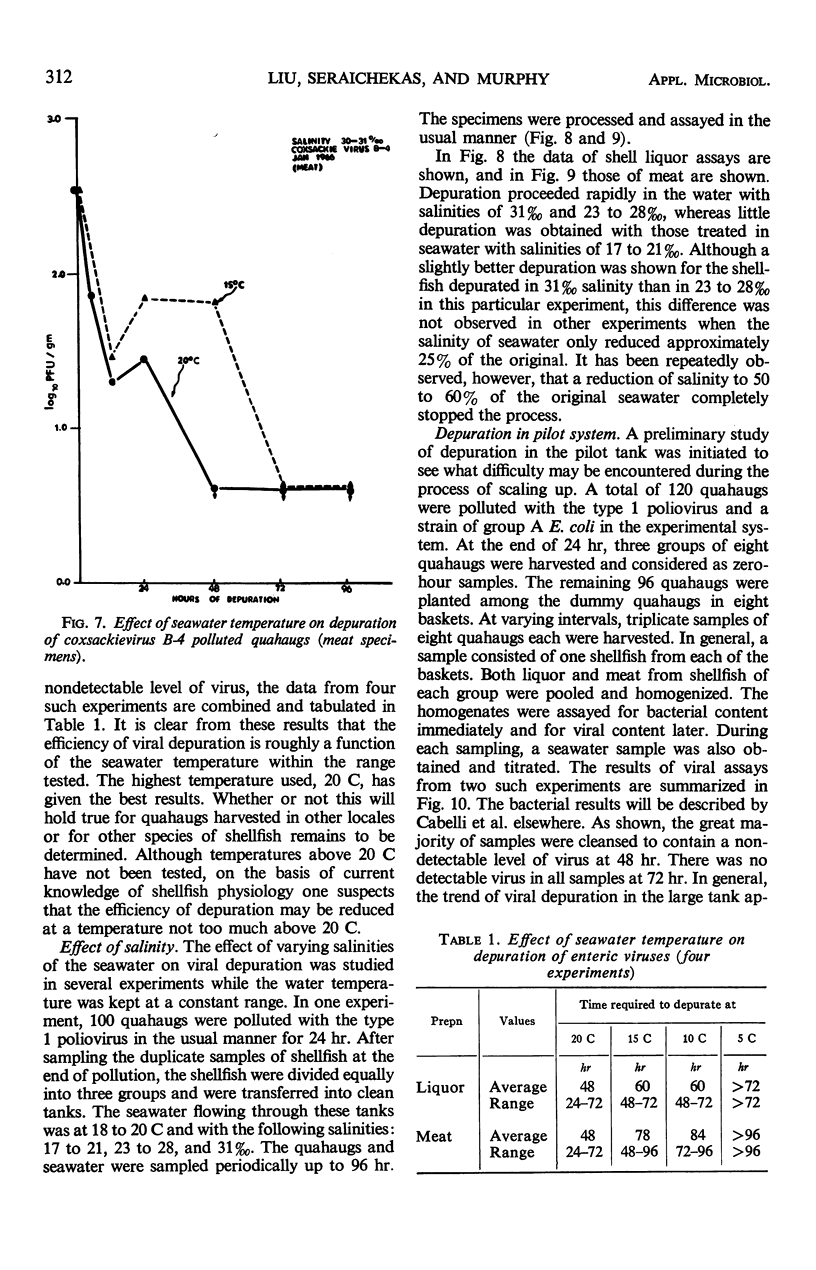

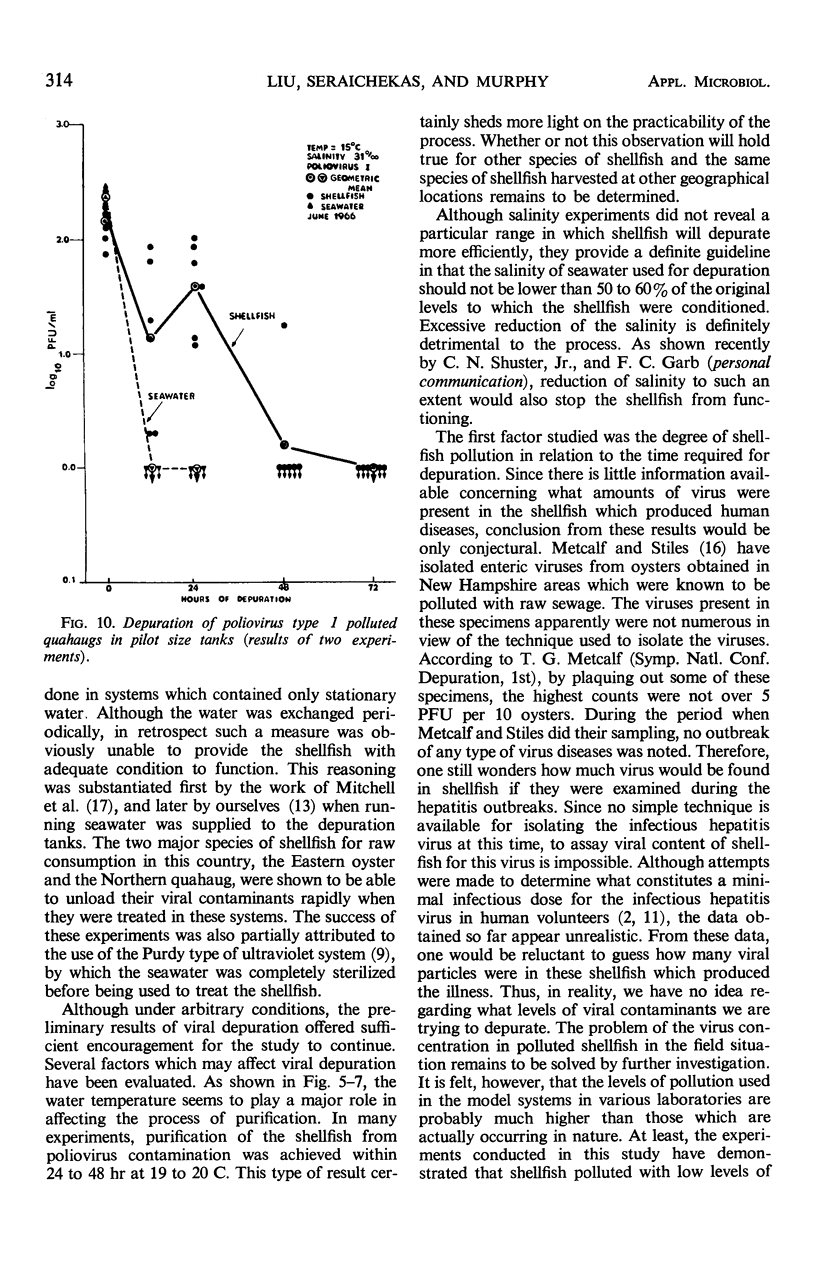
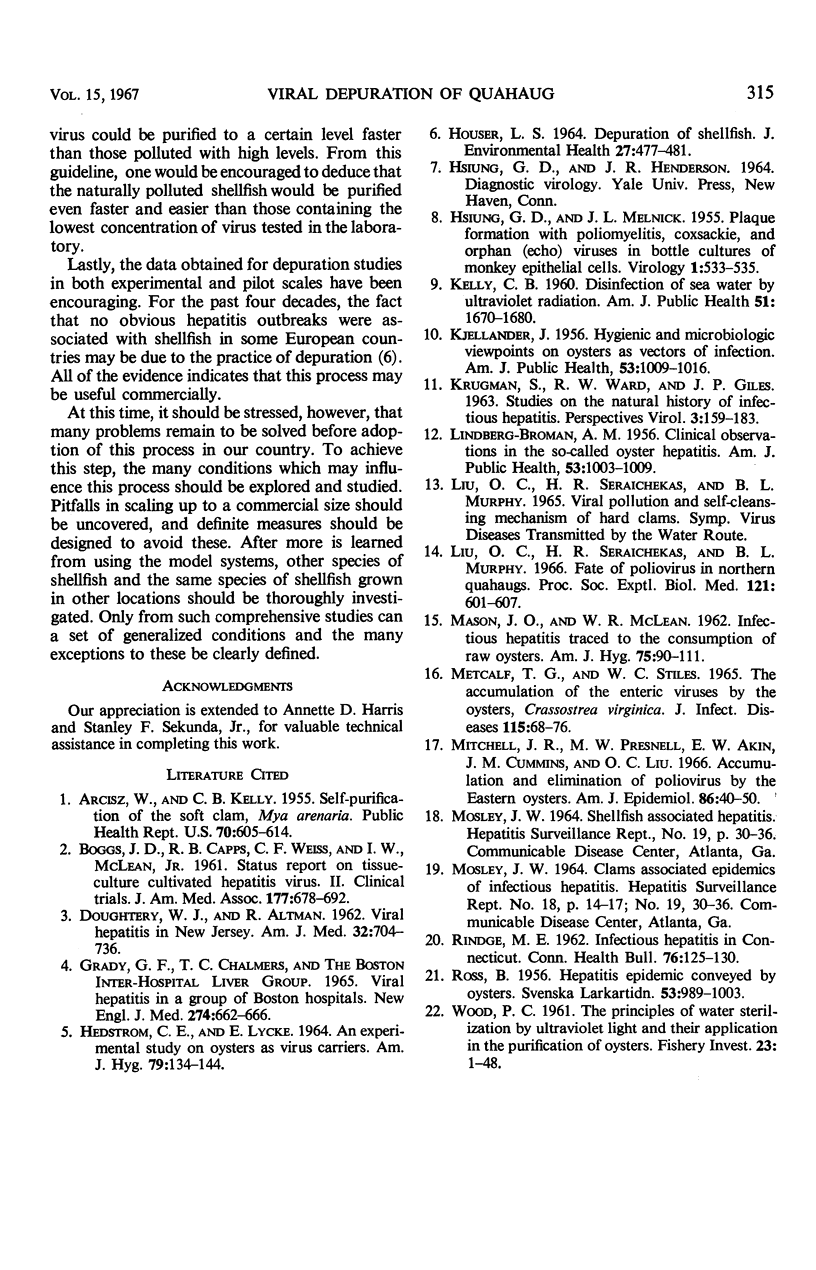
Images in this article
Selected References
These references are in PubMed. This may not be the complete list of references from this article.
- ARCISZ W., KELLY C. B. Self-purification of the soft clam, Mya arenaria. Public Health Rep. 1955 Jun;70(6):605–614. [PMC free article] [PubMed] [Google Scholar]
- DOUGHERTY W. J., ALTMAN R. Viral hepatitis in New Jersey 1960-1961. Am J Med. 1962 May;32:704–716. doi: 10.1016/0002-9343(62)90160-2. [DOI] [PubMed] [Google Scholar]
- GRADY G. F., CHALMERS T. C. VIRAL HEPATITIS IN A GROUP OF BOSTON HOSPITALS. II. A PROSPECTICE CONTROLLED EPIDEMIOLOGIC STUDY. N Engl J Med. 1965 Apr 1;272:662–666. doi: 10.1056/NEJM196504012721303. [DOI] [PubMed] [Google Scholar]
- HEDSTROEM C. E., LYCKE E. AN EXPERIMENTAL STUDY ON OYSTERS AS VIRUS CARRIERS. Am J Hyg. 1964 Mar;79:134–142. doi: 10.1093/oxfordjournals.aje.a120369. [DOI] [PubMed] [Google Scholar]
- HSIUNG G. D., MELNICK J. L. Plaque formation with poliomyelitis, Coxsackie, and orphan (echo) viruses in bottle cultures of monkey epithelial cells. Virology. 1955 Dec;1(5):533–535. doi: 10.1016/0042-6822(55)90041-6. [DOI] [PubMed] [Google Scholar]
- KELLY C. B. Disinfection of sea water by ultraviolet radiation. Am J Public Health Nations Health. 1961 Nov;51:1670–1680. doi: 10.2105/ajph.51.11.1670. [DOI] [PMC free article] [PubMed] [Google Scholar]
- KJELLANDER J. Hygieniska och mikrobiologiska synpunkter på ostron som smittspridare. Sven Lakartidn. 1956 Apr 20;53(16):1009–1016. [PubMed] [Google Scholar]
- LINDBERG-BROMAN A. M. Kliniska iakttagelser vid den s. k. ostronhepatiten. Sven Lakartidn. 1956 Apr 20;53(16):1003–1009. [PubMed] [Google Scholar]
- Liu O. C., Seraichekas H. R., Murphy B. L. Fate of poliovirus in northern quahaugs. Proc Soc Exp Biol Med. 1966 Feb;121(2):601–607. doi: 10.3181/00379727-121-30841. [DOI] [PubMed] [Google Scholar]
- MASON J. O., McLEAN W. R. Infectious hepatitis traced to the consumption of raw oysters. An epidemiologic study. Am J Hyg. 1962 Jan;75:90–111. doi: 10.1093/oxfordjournals.aje.a120238. [DOI] [PubMed] [Google Scholar]
- METCALF T. G., STILES W. C. THE ACCUMULATION OF ENTERIC VIRUSES BY THE OYSTER, CRASSOSTREA VIRGINICA. J Infect Dis. 1965 Feb;115:68–76. doi: 10.1093/infdis/115.1.68. [DOI] [PubMed] [Google Scholar]
- Mitchell J. R., Presnell M. W., Akin E. W., Cummins J. M., Liu O. C. Accumulation and elimination of poliovirus by the eastern oyster. Am J Epidemiol. 1966 Jul;84(1):40–50. doi: 10.1093/oxfordjournals.aje.a120626. [DOI] [PubMed] [Google Scholar]




